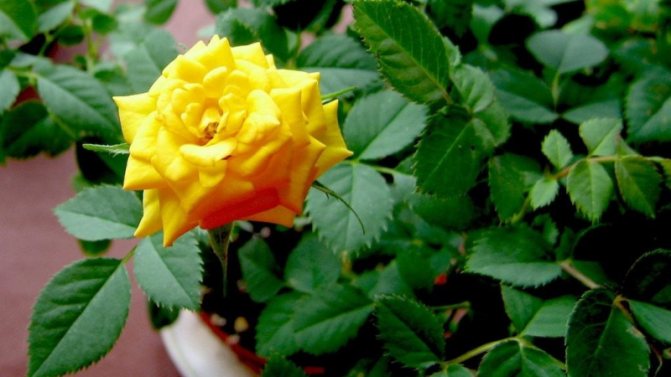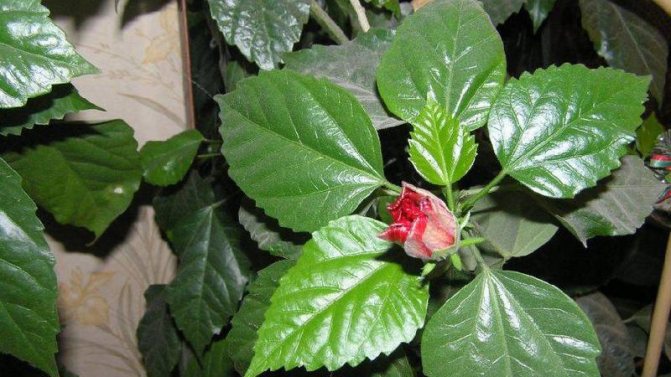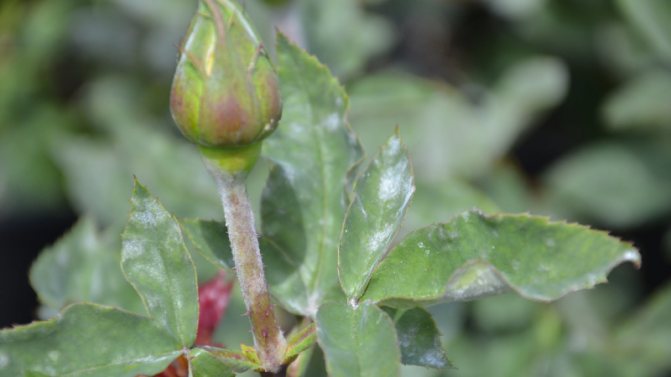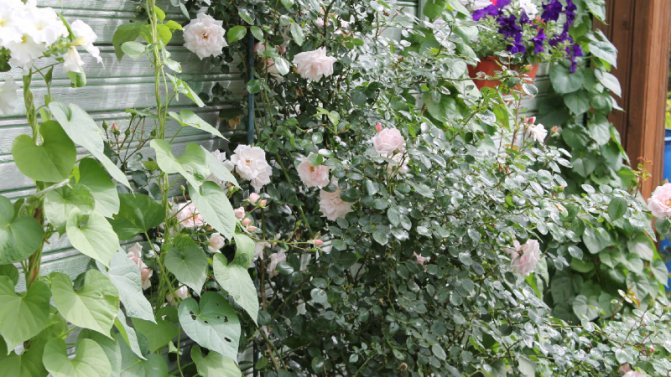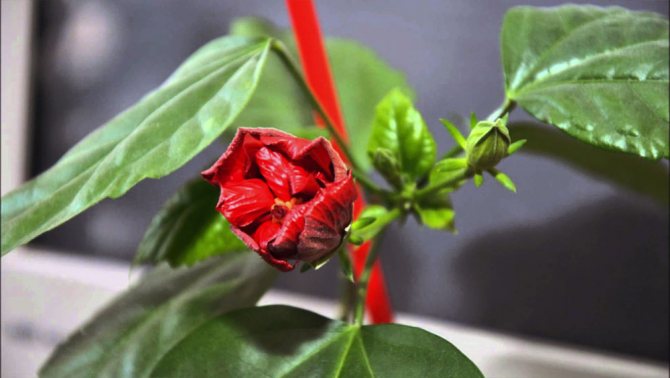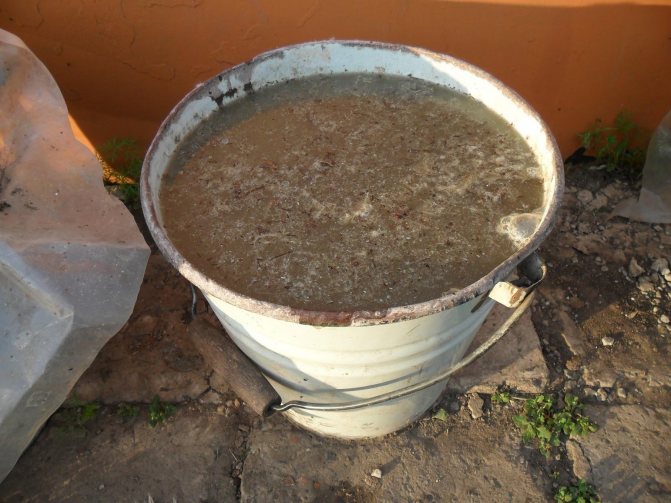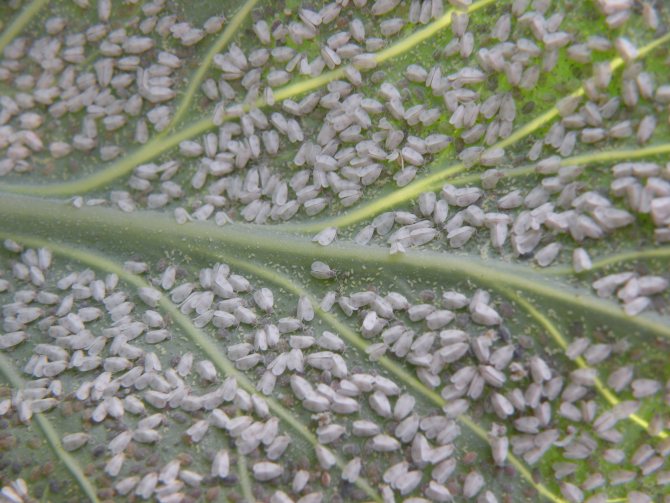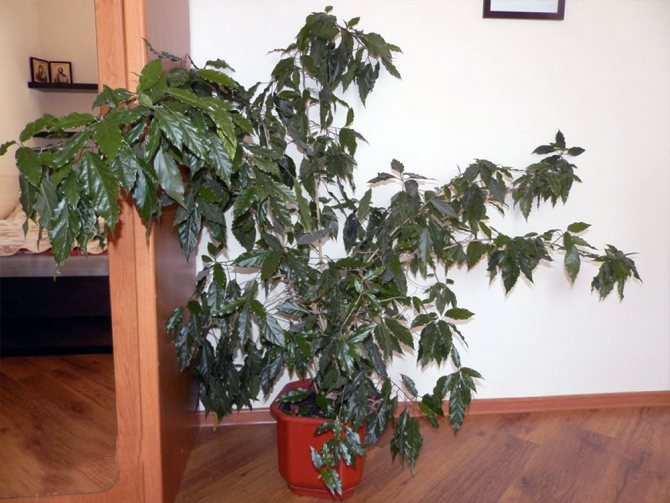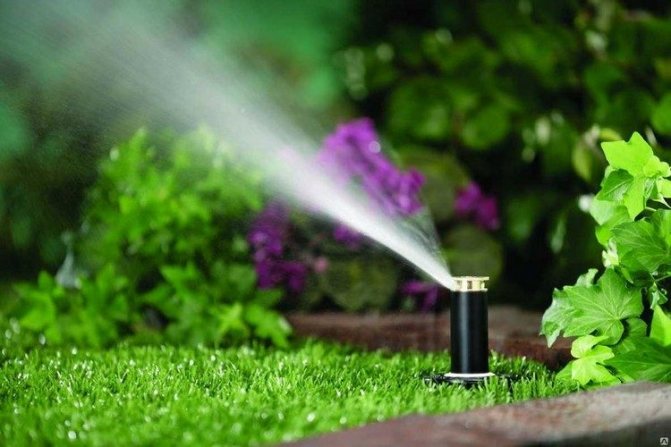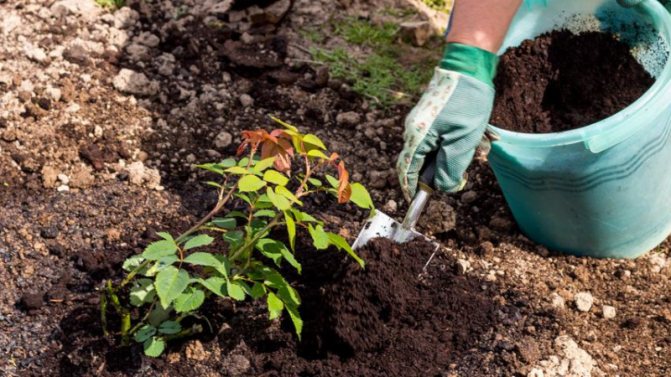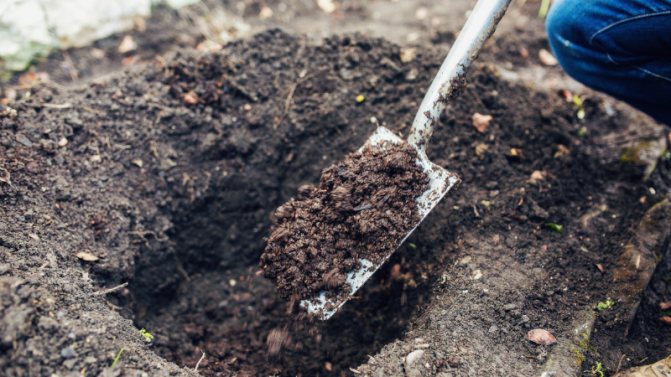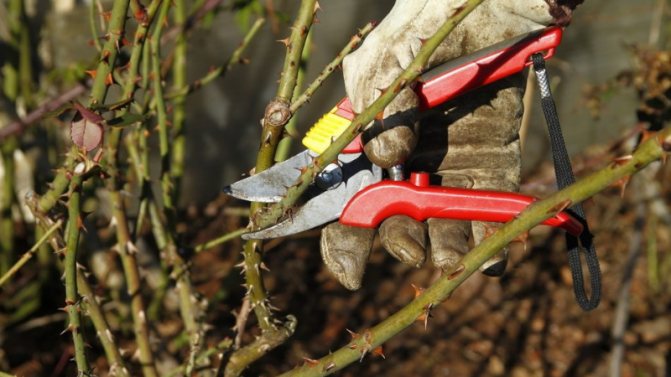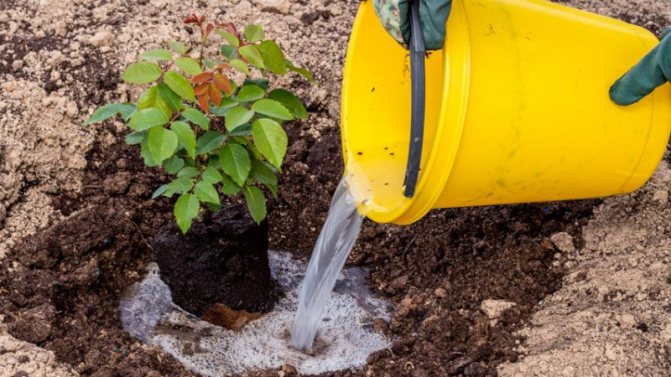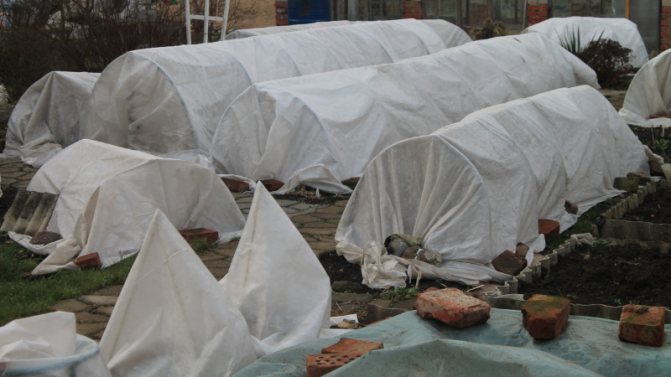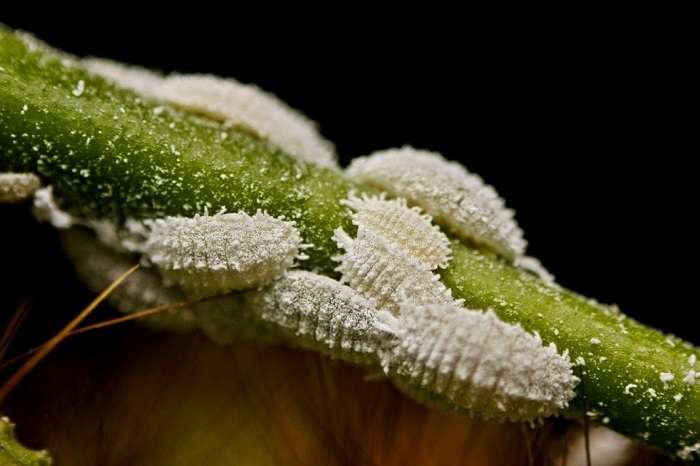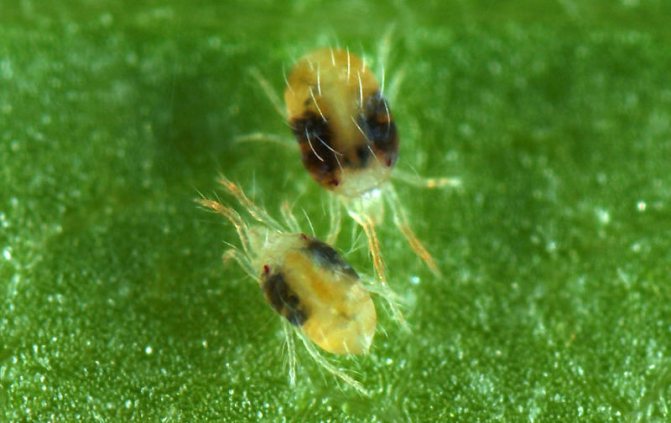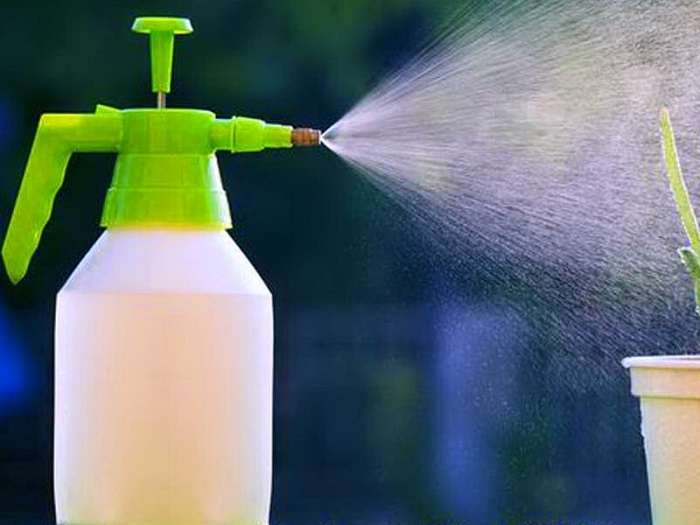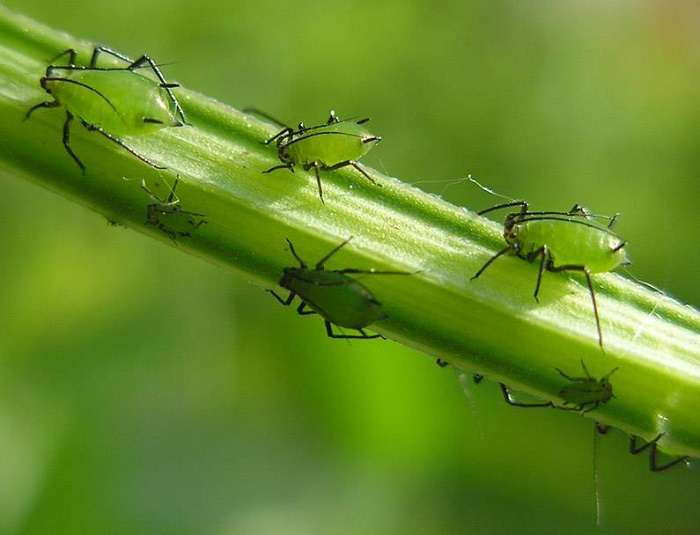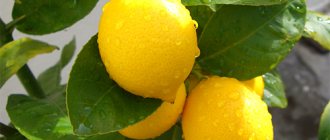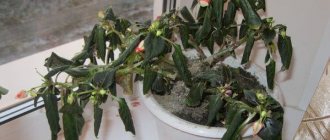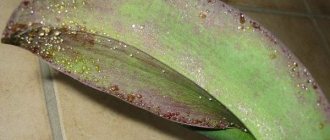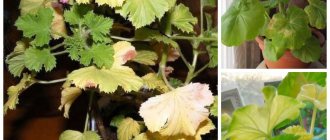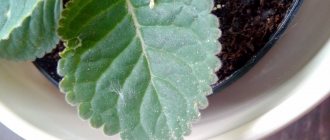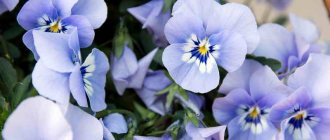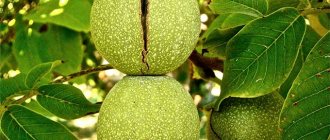How to make hibiscus bloom at home
Only by following the recommendations of flower growers on the maintenance of the flower can you get an abundantly flowering bush every year. But if all the forces are given to flowering, then the growth of the bush will be slow.
In caring for a plant, balance and compliance with all recommendations are important:
- place of detention;
- wintering conditions;
- soil and capacity requirements;
- watering and feeding the plant;
- pruning;
- protection against diseases and pests.
Place of Containment
A prerequisite for the flowering of a Chinese rose will be its maintenance in a bright place. The sun should not burn the leaves of the flower. But in a dark room, hibiscus will not bloom.

To admire flowers in summer, hibiscus should be kept at a temperature of 12-15 degrees in winter. The room should be bright. It is at this temperature that the flowering program is laid. Do not wait for the violent opening of the buds in summer, when hibiscus blooms in winter, if kept warm.
Choosing a pot and fertile soil
The Chinese rose grows at home quickly if the plant was allocated a tub for growth and filled with fertile soil. Until the plant fills the entire clod of earth with roots, it will build up its green mass. The overgrown bush pleases with green foliage, receives proper care, but has not opened a single bud? Why does indoor hibiscus not bloom?
It is necessary to transplant the plant into a smaller container so that the roots are cramped. At the same time, they can be trimmed, removing more brown old parts. The pot should have good drainage from expanded clay or other bedding. Place the upper layer of roots almost on the soil surface. Houseplants bloom if the roots are cramped.
The composition of the soil for the Chinese rose should be fertile, but with the inclusion of clay turf. The acidity of the soil is kept closer to neutral. Charcoal chips in the soil help maintain the balance of the substrate.
Timely trimming and pinching
There is one biological feature why hibiscus does not bloom. Flowers form only on the tops of young twigs. Therefore, a home flower needs a systematic pruning or pinching. Getting the branches to bush by pruning is an important part of hibiscus care. It quickly gives young shoots, and the buds develop on them. One of the main reasons why healthy, overgrown indoor hibiscus does not bloom, is the lack of pruning.
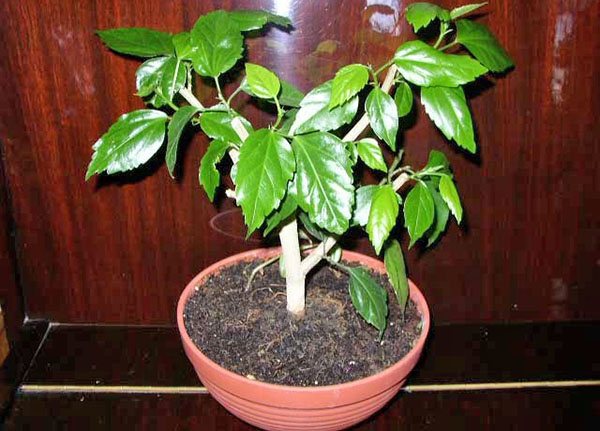

Uniform watering
It is important to water the flower properly. At any moment, all beauty can be violated precisely because of improper watering:
- The water should be soft. When using it, no scale remains in the kettle, and a film does not float on the surface of boiled water.
- For irrigation, the water must be well defended so that there are no traces of chlorine in the tap water.
- The temperature of the irrigation water should be around 30 degrees.
In summer, indoor hibiscus is watered abundantly and sprayed with leaves from a spray bottle. But between waterings, the top layer of the earth should dry out. In winter, the plant is rarely watered. In cold, damp soil, inactive roots can rot. Lack of watering or nutrition will cause the buds and flowers to shed when the hibiscus is in bloom.
Phosphate fertilizers are especially effective for flowering. It can be a superphosphate extract, or a special composition for indoor flowering plants. Fertilizers are applied only to wet soil.
What to do if hibiscus does not bloom and how to find the cause. Do not overexpose the rose tree in cold conditions. In order for it to bloom, it is necessary to exclude temperature drops during the growing season. So, if the plant is overexposed in the cold until the buds appear, and then transferred to heat, the buds will fall off from a sharp change in temperature. The same will happen if the plant gets caught in a draft.


A flowering tree requires careful handling. The pot is installed in place once for the whole summer. It cannot even be rotated if the buds have already been picked. The peduncle is very fragilely attached and falls off from the slight swaying of the branch. Therefore, during flowering, you need to walk by carefully.
In summer, hibiscus loves fresh air. The flowerpots should be installed in a place protected from wind and direct sunlight. A loggia, balcony or veranda with a sun curtain will be the best place for blooming hibiscus.
conclusions
What you absolutely should not do if you want to wait for the flowering of the Chinese rose:
Blooming hibiscus is an undeniable decoration for any interior. Its bright and lush flowers are a real reward for gardeners who can truly take care of it by providing the right care.
Why hibiscus with yellow leaves does not bloom
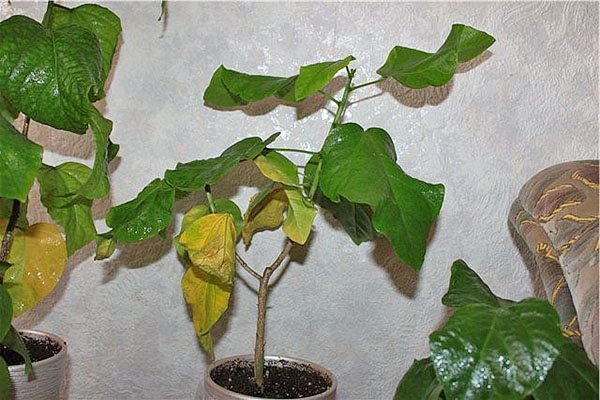

It should be noted that only healthy hibiscus flowers bloom, which have the necessary conditions for development. If spots appear on the leaves of any format or the leaf blade turns yellow, these are signs of a disease. So, green drooping leaves will say that the plant is dry, then it will lose color and buds.
Yellow leaves can give a signal that there is a disorder with the root system, and there is no need to wait for flowering under these conditions. In addition, insect pests can colonize the plant, taking food from the hibiscus. Therefore, each pruning, watering, wiping the leaves should be combined with a preventive inspection of the plant.
Compliance with agricultural technology will allow you to annually enjoy the victorious flowering of a tropical plant, which brings harmony to the house in the relationship between family members.
Hibiscus care experience - video
Insect pests
Hibiscus is infected by contact with a diseased plant or when transplanted into contaminated soil. The most dangerous for the domestic Chinese rose:
- Aphids, nestles in flowers and young growth.
- Spider mite, lives on the back of leaves. The best breeding environment is warm, dry air.
- Whitefly, settles at the bottom of the leaf. Its larvae cover the plant with a sticky mass, leading to yellowness.
- Worms, habitat - leaf sinuses.
- Scutes, showing brown tubercles on the stem.
- Gall midge, its larvae eat buds and young leaves.
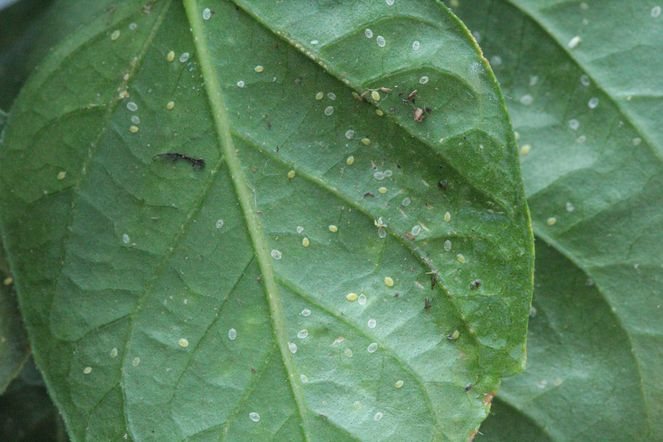

Hibiscus leaf covered with whitefly larvae
To combat, they use specialized chemical agents, folk methods, improve daily care, cut off diseased parts or transplant a plant. Actions are carried out one at a time or in combination, depending on the degree of damage and the effectiveness of previously used means.
Why hibiscus does not bloom
This plant is native to tropical countries.Several centuries ago, Europeans appreciated its beauty and brought it for cultivation in botanical gardens. Gradually, new species resistant to frost and other conditions of northern latitudes began to appear, after which many growers began to grow hibiscus in their area and even indoors.
At home, this plant takes root and blooms very well, but what if the indoor hibiscus has stopped blooming? There is a difference in grooming between outdoor and indoor cultivation.
Different climates, humidity, lighting and other factors require compensation. In an open space, hibiscus is quite unpretentious. It takes root easily and often requires only regular watering, pleasing the eye with good flowering. This may not be the case with a houseplant. The plant seems to have taken root, grows well, the leaves are healthy and strong, but there are no flowers, or they are very rare.
Check if you follow these guidelines for caring for the example of the Chinese hibiscus, also known as the Chinese rose:
1. Hibiscus is undemanding to the sun, it is afraid of direct sunlight, but a constant shade is not very suitable for it, except for the wintering period. Let the pot with the plant during the flowering period stand in a bright room, but protected from direct sunlight. 2. Do not place the plant under an air conditioner or near a fan - wind and drafts prevent it from growing. 3. In the warm season, give the hibiscus access to fresh air - take it out onto the balcony, open the window if it is safe for household members, or take it to the garden if possible. But don't put in the scorching sun and keep out of the wind. 4. He loves water, so make sure that the soil does not dry out. Watering is encouraged regular and abundant. 5. The soil must be constantly loosened, providing air access to the roots. 6. Does not like heat, so in summer you need to spray it daily, and sometimes several times a day. 7. Make sure that the plant is not exposed to heat indoors. If the window sill is located with a closed window or under the scorching sun - a bad option. 8. During active growth, feed it with a complex mineral fertilizer several times a month, organic fertilizer in a low concentration is suitable. 9. In winter, cut fertilizing and watering, the plant should rest.
Chinese hibiscus needs a break in winter. Water less often and cut back to once a month. It is best if you move the plant to a cool and shaded part of the room, where there will be no large changes in temperature. It is not necessary to put it near the heating system. Let it rest, build up strength before the new flowering season.
Transfer
The signal to transplant a plant is to peek out the roots through the lower drainage holes of the pot. Hibiscus grows very quickly. Only a new capacity slightly larger than the previous one can restrain its growth. An overly large pot is destructive. They are transplanted into the purchased ready-made soil, consisting of a sheet array. Peat is too heavy for a Chinese rose. If a pot of a suitable size is not available, then a higher drainage layer must be used. For this, pebbles or expanded clay are suitable. When a container of suitable size is selected, a layer of 2 cm pebbles is enough. A light soil 2-4 cm is poured over the drainage.From the first to the fifth year of life, the Chinese rose is transplanted annually. A five-year-old or older plant is transplanted every 2-3 years. But every year, fresh soil is poured in a layer of 3-5 cm.
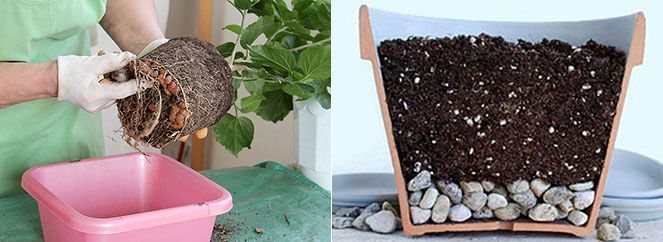

When transplanting, they are guided by the difference between the diameter of the previous and the next pot of 2-2.5 cm. If the rule is violated, the plant will fatten and grow only green mass. Full flowering this season is achieved only by increasing the drainage layer.
When transplanting, the hibiscus is removed from the old pot, carefully laying it on its side. Tap on the sides of the container to make it easier to remove the plant. The roots are examined for decay, podoprevanie or pests.With the help of a pencil, the roots are freed from the excess layer of old soil. It is important not to be zealous so as not to tear off the living parts. White blotches between the roots are not a disease, but perlite, it is added to increase the air permeability of the soil.
The flower is placed strictly in the center of the new container. Sprinkle the soil, slightly compact it. Before burying the roots, take into account that the sides of the pots should protrude 1.5-2 cm above the soil layer. Such a reserve will simplify subsequent watering. The pot is watered for the first time a day after the transshipment. So that the plant does not suffer much and takes root faster, it is better to shed it well 3-5 hours before transplanting.
Common mistakes
1. If you overfeed the hibiscus with nitrogen fertilizers, you will not be able to admire the flowering. The plant will not die, it will be able to grow, the leaves will be, but not the flowers. 2. Monitor the climate, take the Chinese rose out of winter in time. If buds appear on the plant when it is in a cool room, then with the onset of heat, the buds will disappear, as well as some of the foliage. This is not a disaster, with time everything will return, but this is a mistake, delaying the moment of beautiful flowering. 3. If you do not provide the plant with proper conditions for light, temperature, watering, feeding, flowering will be weak or disappear. 4. Water often and abundantly in summer, but check the drainage system. Water should not stagnate in the root system, the roots may start to rot. Lack of drainage or poor drainage have ruined more than one houseplant. 5. The pot for Chinese hibiscus should not be very large. If the roots are a little crowded, this is even good, as it leads to good flowering. 6. Lack of pruning will result in rare or no flowering. Indoor hibiscus should not overgrow too much. Pruning and / or clothespin to help the branches to bush. Young shoots will quickly sprout, flowers will appear on them.
The Chinese rose is the most common type of hibiscus to keep as a houseplant. It is good in itself. The room resembles a small tree with a lush crown. But if flowers do not begin to grow on this tree, the pleasure will be half-hearted, and experienced flower growers will not bring joy at all, because this means that they have made a mistake in something and made a mistake.
Consulting an experienced specialist will allow novice growers to avoid many mistakes. Beginners will be able to get valuable advice, because it is better to learn from others, not your own mistakes.
Reproduction
The Chinese rose is propagated in two ways: by cuttings and growing from seeds. Seed propagation in hibiscus, unlike many other potted crops, is very productive. But grafting is more efficient and faster.
Cuttings
After pruning, branches remain that can be used for propagation. For this purpose, cuttings 8-10 cm long are suitable. The lower large leaves are removed, exposing part of the trunk, treated with any stimulant for the growth of the root system, for example, Kornevin. Then placed in sandy soil or a container of water. Full roots appear in 3-4 weeks. Then the plant can be transplanted into a separate pot.
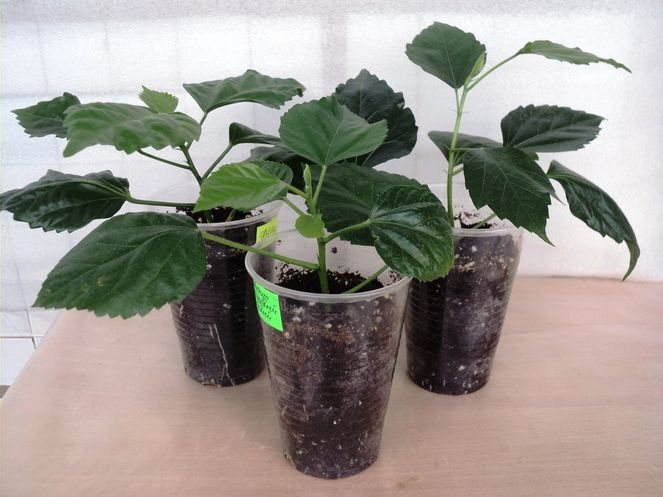

The apical parts, pinched from an adult Chinese rose, are also suitable for cuttings. The rooting procedure is the same as for other shoots, the main thing is that 2-3 internodes remain on the shoot. The plant will give abundant flowering after 3-4 months.
Seeds
Hibiscus seeds remain viable for 5-6 years. Before planting, the planting material is awakened by treatment with a growth-stimulating solution. Swollen seeds are immersed in a light substrate. Cover with polyethylene and create a mini greenhouse. It is ventilated daily. The sprouts will appear in 10-12 days. In the three-leaf phase, the hibiscus is dived and planted in miniature pots.
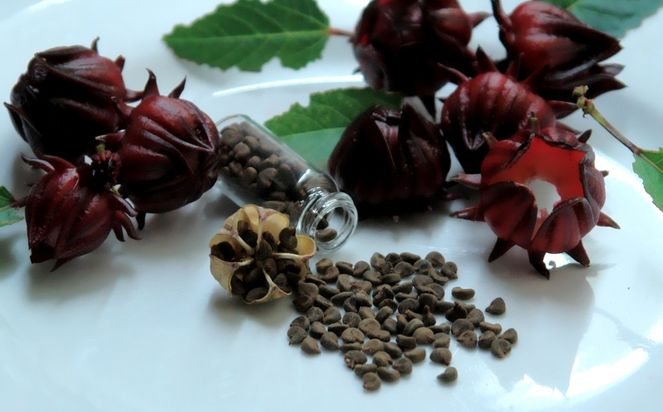

A Chinese rose grown from seed will bloom for 3-4 years. And propagated by a cuttings - in the same or next year.
Briefly about hibiscus: flowering, planting
With good care, the height of a shrub can reach 3 m or more. Its branchiness is increased by correct pruning. The life span of a hibiscus is within 15-20 years.
The diameter of huge flowers often approaches 12 cm, but there are varieties whose inflorescences are more than 16 cm in diameter. The color palette is quite extensive, but shrubs with red, purple and white buds are most often found. After planting the culture, you will have to wait 3-4 years until the first bud appears and the flower opens. And after transplanting the finished seedling, flowering begins a year later.
Interesting! Each flower pleases the eye for a day, then fades and falls off. A new bud appears almost immediately, giving the appearance of continuous flowering.
How to prune roses
Timely and correct pruning of the stems enhances the flowering process of the rose bushes. On grafted roses, you need to remove wild growth so that it does not take strength from the shrub. You also need to remove sick, dried, pest-damaged branches. It is worth cutting off wilted buds from the bush, as this stimulates the plant to the next flowering and prevents the development of diseases.
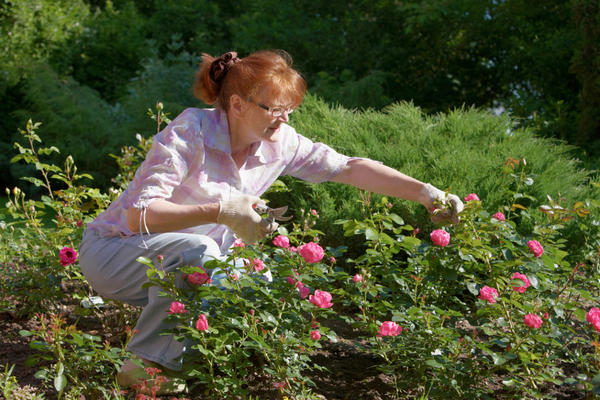

Common types of hibiscus
There are more than 200 varieties and varieties of hibiscus. All of them are unique and differ in keeping conditions. However, the most common are only a few.
Syrian hibiscus
In many catalogs, this species is known as ardens. This is a garden plant that grows up to 6 m. The leaves of the shrub are large enough (10 cm), the color is bright green. The size of the buds is slightly smaller than that of the Chinese hibiscus, but the flowers are two-colored, terry flowers are more beautiful.
The plant growing in the garden needs to be pruned annually to ensure good flowering. The procedure is carried out twice: after the buds open and before waking up.
Syrian hibiscus is cared for according to the climate where it is cultivated. It grows very slowly, so you should not expect the appearance of buds earlier than the seedling reaches 3 years.
Tree hibiscus
This species belongs to frost-resistant, it is quite unpretentious. Tree hibiscus tolerates transplanting well. They use a tree to form a hedge, create a design, decorate terraces. With good care, it has abundant and long-lasting flowering. In spring and autumn, the foliage of the shrub can turn yellow.
When transplanting hibiscus, a lot of humus is placed in the planting pit. The place for growth is chosen sunny, quiet, without drafts. Watering often, but not allowing water stagnation. In the early years, young bushes are covered for the winter in order to protect them from frost.
Swamp hibiscus
Herbaceous perennial is large in size. Its shoots die off by winter, and during the growth period they stretch by 2.5 m, so pruning is simply necessary for him. Heart-shaped serrated leaves have a weak edge. The color of the buds can be crimson, white, red, pink. Hibiscus loves wetlands, a lot of sun. The flower is planted near streams, ponds, they mask sewage pits.
The plant is planted in acidic soils, where other types of hibiscus do not take root.
Herbaceous hibiscus
This unique species is obtained from several varieties - bright red, armed, marsh. There are two types: perennial and annual.
Most flower growers prefer to cultivate perennial varieties because they do not need special care.
This variety has petiolate incised leaves and bright flowers of various colors: pale pink, yellow, raspberry, blue, lilac, snow-white. There are also flowers that have two shades at the same time.
The herbaceous type of hibiscus is adapted to grow in any climatic condition.The plant is not demanding for pruning, it does not need additional feeding. The culture is resistant to drought and frost.
The first year doesn't count
Start with the fact that rose of the first year of planting it may not bloom - it all depends on the condition of the seedling, in what state it waited for planting (whether it was in the refrigerator or arrived in a container already with buds), competent actions of the gardener during planting and care. Moreover, even if a young rose discovers a desire to bloom, it is not advised to give it to it - let it take root better in a new place. You can only satisfy curiosity and wait for one flower to open, which is then still better to pick.
Growing shoots of rambler. Photo by the author
Another note for novice rose growers. Climbing roses-ramblers (Rambler roses) bloom only in the second year, and then only on condition of successful wintering. Therefore, if you have planted a climbing rose from the rambler group in the garden, do not try to wait for its flowering this summer. It will be necessary to carefully cover the growing shoots for the winter, which will bloom next year, according to all the rules.
Why hibiscus doesn't bloom
When a Chinese rose is in bloom, it expresses gratitude for the care that is taken with sufficient care. But excessive diligence in caring will inevitably cause a reason because of which the plant may stop opening its buds. As a result, the tree will be covered only by emerald foliage without a single flower.
Any reason can cause imbalance.
Lighting problem
Important! The Chinese bush will not have full flowering if it is planted in the shade. Even partial shade will not suit the plant to bloom, only the maximum amount of diffused light. Hibiscus growing outdoors should be located in a place where there are no direct scalding rays of the sun and strong winds.
Novice flower growers often make the mistake of changing the location of the flowerpot: they rearrange the houseplant from place to place, turn it to the light in different directions. It is absolutely impossible to do this, since with such care, the hibiscus will never open the buds. The tree should be immobile all summer.
Proper watering
For lush flowering, the plant needs proper watering. If the room temperature is low and the hibiscus has a lot of moisture in the soil, the roots may start to rot. At the first sign of malaise, the bush immediately sheds buds and color. If measures are not taken, the leaf begins to turn yellow and fall off, the rose gets sick and dies.
With a lack of moisture, the buds also fall off, and if, what needs to be done in order for the hibiscus to bloom, it is to adhere to the following rules:
- do not spare the water during the sultry period, but you need to wait for the topsoil to dry out;
- water for irrigation should settle well;
- stagnation of water in winter is completely unacceptable;
- in hot weather, hibiscus, especially domesticated, should be sprayed daily on each leaf. In addition, a container with water is placed next to the plant to increase moisture;
- irrigation water should be warm.
Top dressing of the Chinese rose
The reason why hibiscus does not bloom, but gives only foliage, may be in violation of the feeding regime. The bush is either "hungry" or overfed with fertilizers.
During the period of active growth (March-September), the tree is fertilized weekly, and the rest of the time this should be done only once a month. It is recommended to use a mineral complex developed for flowering crops.
Important! Nitrogen supplementation will not cause the hibiscus to bud. Excess nitrogen will only cause the greenery to grow actively. For the plant to start blooming, it needs phosphate feeding.
Soil composition
The culture makes special demands on the soil: neutral acidity, loose soil, the presence of a drainage system. The soil mixture should include humus, clay turf, charcoal chips.
The small tree needs to be repotted frequently, gradually increasing the volume of the pot. An adult plant does not need to be transplanted, but every season it is advisable to carefully remove the top layer of the earth and add a nutritious soil mixture.
What to do to make hibiscus bloom luxuriantly and profusely?
In order for the Chinese rose to delight every year with its lush flowering, it is necessary to observe the peculiarities of the content of the culture:
- The location in the apartment is a south or east window with shading during the midday sun. In the shade, the flower will not bloom;
- Correct wintering. The temperature in winter should not exceed 15 degrees. If the temperature is less than 10, then the plant will drop foliage;
- Pot and soil. The pot should be a little cramped for the root system, only then the culture will please with flowering; good drainage is required in the pot. The acidity of the soil should be neutral. Clay turf is required;
- Pruning should be systematic, otherwise the bush will grow strongly and will not bloom;
- Water for irrigation should be soft, free of chlorine and scale. The temperature is about 30 degrees Celsius. In the summer, water abundantly and regularly, and less frequently in the winter. However, overflows are dangerous for the plant;
- Top dressing. Fertilizers with a high phosphorus content are considered extremely effective for flowering;
- Lack of temperature drops and drafts.
Thus, in order for the Chinese rose to bloom, it is necessary to observe the peculiarities of care, to feed the culture only in the summer-spring season. It is recommended to choose fertilizers with a high phosphorus content. This promotes lush flowering. However, an excess of fertilizing, on the contrary, can harm the plant. During the dormant period - in winter - there is no need to feed the culture.
For watering, you need to take soft and settled water. Hibiscus does not tolerate water with scale and chlorine. Therefore, before watering the crop, it is required to settle the water for several days. You can also filter or boil the water.
Important! During the period of bud formation, the pot must not be rotated and its location changed.
Expert advice
It happens that if all the conditions required for flowering are observed, the hibiscus still does not bloom. The reason may lie in the malaise of the plant.
- Yellowness on the leaves appears if there is a problem with the roots. The culture must be transplanted, after reviewing the roots, removing damaged and problematic ones.
- If the lower foliage quickly crumbles, the appearing ones have a faded appearance, then the plant has suffered from poor water, hypothermia or dry air. For resuscitation, you will need to replace the water for irrigation, revise the temperature regime, and refresh the flower by spraying.
- When hibiscus is attacked by pests, brown spots, twisted leaves, and the presence of fishnet can be observed. Any insecticide is suitable for the fight.
- Hibiscus can shed unopened buds when there is a lack of nutrition or a lack of moisture.
- The yellowness of the foliage is caused by a lack of iron and nitrogen.
Hibiscus loves comfortable conditions. But, if you do not "strangle" him with care, then, having rested in the winter, trimmed, fed, he will thank him with a gorgeous long flowering.
Pests and diseases that interfere with the flowering of hibiscus
The main diseases that prevent the flowering of the Chinese rose:
- Non-infectious and infectious chlorosis. The reasons are: excess nitrogen in the soil, fungus;
- Fungal infections cause buds to fall off;
- Root rot can lead not only to a lack of flowering, but also to the death of a plant.
Chlorosis (lack of iron) on the leaves. Solutions - transplants, feeding, time for rehabilitation.
Flooded plant affected by root rot.
Infectious fungal diseases are treated with fungicides.
Among the pests should be highlighted:
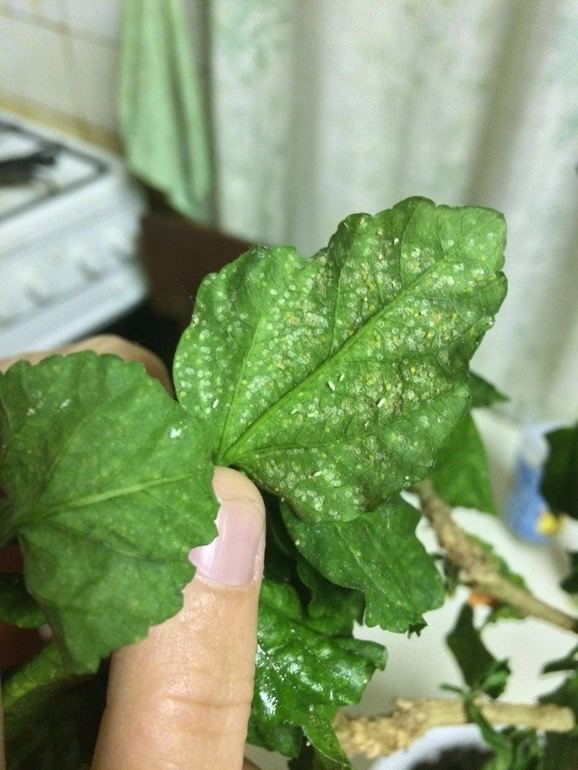

These pests usually infect leaves and stems, practically do not affect flowering.However, huge accumulations without treatment can lead to the death of the culture. These pests are treated by wiping the plant with soapy water and insecticidal preparations.
Bloom
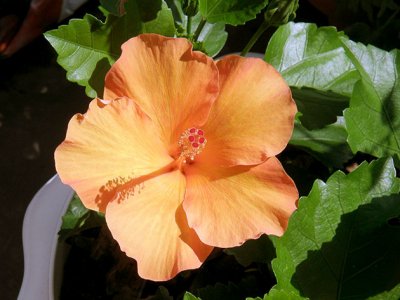

Syrian hibiscus (as it is called in science) - a representative of the Malvov family. Within Russia, it is better known as chinese rose, or rosana... Hibiscus lovers love it for its large and bright flowers of amazing beauty. However, the plant often refuses to please its owners with a scattering of buds, even if the care for this handsome man is carried out at the proper level.
Flowering period
The development of the Chinese rose is very fast. As a result of proper care, it turns into an attractive tree and can bloom for several months.
Hibiscus comes from a tropical climate, so in theory it can be blooming all year round. But this is possible only if all the necessary conditions are provided: high temperature, good air humidity and a lot of bright sunlight.
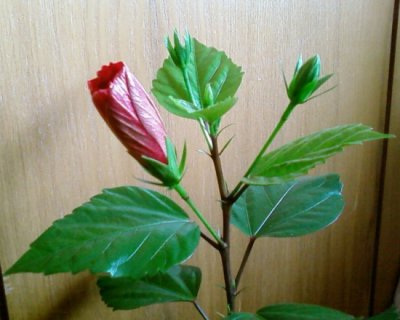

Buds
Hibiscus inflorescences are characterized by an exotic appearance and large size: fully opened buds are 9-16 cm in diameter.
The shape of the flower is cup-shaped, the inflorescences are both simple and double. In the center of each flower is a pistil that turns into stamens.
Usually hibiscus flowers open in the morning, at sunrise, and in the evening they wilt. With proper care, one branch during the day can please about 20 inflorescences, on some large plants up to 50 flowers can bloom at the same time.


Dormant period
The dormant period of the Chinese rose lasts from November to February. During these months, the plant is best kept at temperatures between + 14 ° С to +16. During its dormant period, hibiscus should get enough light and moisture: Provide good lighting and moderate watering. At this time, you need to disturb him minimally so that the plant can rest, gain strength and prepare for flowering.
You can also send a rose tree for wintering after pruning it. To do this, in the fall, you need to give him the opportunity to shed his leaves. For this purpose, watering is gradually reduced to a minimum. When the leaves of the hibiscus fall off, the stems are carefully cut off, leaving "hemp" 6-8 cm long. Then the plant is transferred to a cool place (the ambient temperature should not be higher than + 12 ° C). To prevent the root system of the Chinese rose from drying out, the soil needs to be slightly moistened from time to time.
About the reasons in the video
About his mistakes in growing hibiscus tells the author of the channel "Landscaping independently". Along the way, the author also shows other plants in his collection.
The Chinese rose or hibiscus adorns the homes of many Russians. Its dark green foliage and large burgundy flowers will appeal to every housewife. Growing a flower at home is quite simple, but sometimes, for reasons unknown to the owner, the Chinese rose does not bloom. Why and what to do in this case? A list of possible problems, a description of the symptoms of hibiscus lesions by diseases will certainly help a novice florist.
The Chinese rose became famous all over the world for its abundant flowering from March to late autumn.
Why doesn't it bloom?
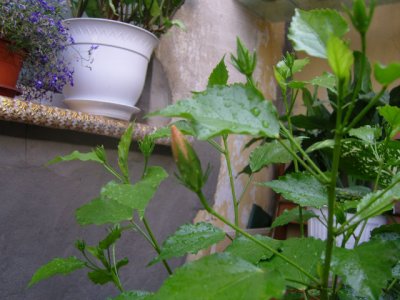

Many growers complain that hibiscus does not bloom at home, has been standing for years and does not want to bloom. Or sometimes a couple of buds appear and fall off without opening.
How to make a Chinese rose bloom?
The guarantee of the flowering of any houseplant is to take proper care of it.
The content of hibiscus also has its own secrets:
- The plant loves sunlight, so it should be kept in the brightest room.
These are the basic rules for keeping hibiscus.But often, even with their observance, there were no flowers and there are no flowers. This phenomenon happens due to the fact that the 2 Key Requirements for Rose Flower Blossom:
- The rose tree must be sent to rest in the cold season;
- Pruning branches.
Practice shows that keeping hibiscus does not require any extra efforts from the grower. The key to health, attractiveness and lush flowering of a plant is proper care and provision of optimal conditions for wintering.
See more photos of hibiscus below:
Useful video
Learn more about the flowering of the Chinese rose in the following video:
If you find an error, please select a piece of text and press Ctrl + Enter.
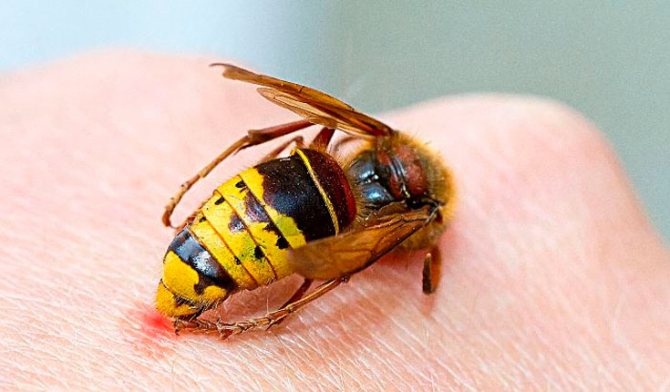

Hibiscus is a tall ornamental plant native to Southeast Asia. This flower is often used to decorate the halls of hotels, restaurants and even hospitals. It would seem that with minimal care, the plant pleases the eye with abundant flowering, while at home hibiscus does not bloom at all. Let's see why indoor hibiscus does not bloom.
Flowering features
Hibiscus came to us from southern countries, so it is not grown on the street in our country: the plant is thermophilic. The flower is not only able to become an interior decoration, but also protects the house from negativity - at least that's what esotericists and Feng Shui experts think. In nature, hibiscus can reach a height of 4.5 meters: at home, of course, there is no such high bush. The Chinese rose lives for about 20 years, annually pleasing with flowering.
The plant comes from the Malvaceae family and boasts amazingly beautiful, multiple and bright flowers. The Chinese rose grows quickly: with proper care, it develops from a small seedling to a flowering bush within just a few months.
If you create the right conditions: warm and humid, hibiscus will be able to bloom all year round. In the conditions of our standard apartments, however, creating such a tropical microclimate is problematic. Therefore, the flowering of hibiscus usually lasts for 2-3 months: from mid-summer to mid-late September. With very good care, the decorative period can last longer: from March to October.
Description of flowers


Hibiscus buds are brightly colored and exotic in appearance. The size of the flowers is large: the diameter of one specimen ranges from 9 to 16 cm. The buds have a cup-shaped regular shape, double or simple structure. In the core of each flower there is a rather large pistil surrounded by stamens. Flowers usually do not have aroma.
Description
The Chinese rose, or hibiscus, refers to the evergreen or deciduous plants of the Malvov family. Natural habitat - tropical forests of the Asian continent.
Hibiscus can be in the form of a bush or tree. It has delicate dark green leaves, carved along the edges, slightly resembling birch leaves.
Hibiscus blooms with large, bright flowers located at the tops of the shoots. Flowers have a wide variety of colors, there is only black, perhaps. In homes, the most common Chinese rose with bright red, lush buds.
In some species, the flower cup reaches 30 centimeters in diameter. The Chinese rose can live a long life, its life cycle is almost 20 years. It is very common to find a bush of this plant as a decoration in homes and offices.
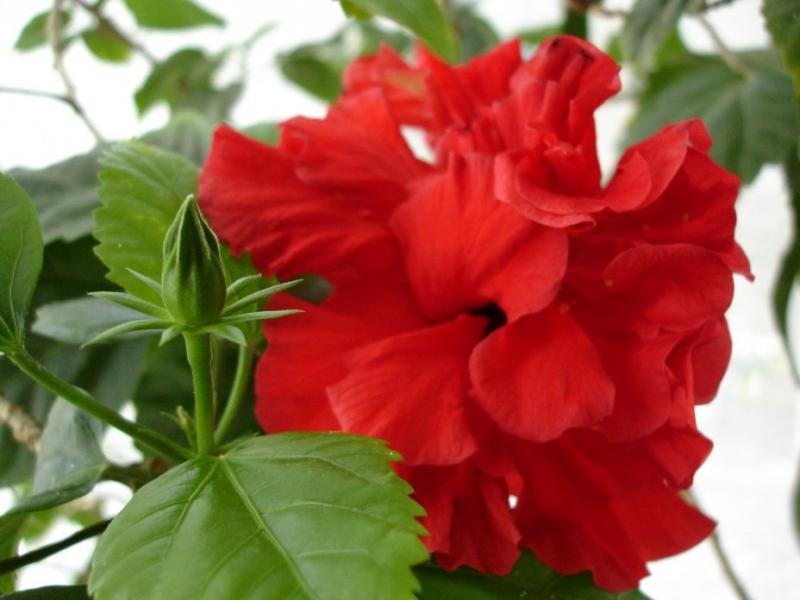

If you follow the conditions of care, then the bush will delight with lush flowering all year round. The most important thing is a sufficient amount of heat and light. And also - water on time and do not forget about pruning the bush. In a city apartment, it is not always possible to comply with the conditions for keeping a Chinese rose, therefore, most often, hibiscus at home blooms in the summer for two to three months. But sometimes flowering does not occur at all.
Why is there no bloom


As a rule, all the reasons for the absence of flower buds in a hibiscus one way or another boil down to improper plant care. Next, consider the most likely causes.
Overly spacious pot
Hibiscus is characterized by such a feature: until its roots are completely entwined with an earthen ball, there will be no flowering. Therefore, when you plant a plant in too large a container, its small roots will cope with a huge earthy ball for a long time. And all this time you will not see flowering. Foliage, however, and shoots will grow quite actively.
Keeping warm in winter
For a full-fledged life, hibiscus needs a rest period, which lasts almost the entire winter. At this time, future flower buds are laid, from which buds will be obtained in the next growing season. However, in order for the buds to start, hibiscus should be kept in winter at a cool temperature - about +15 degrees. If the temperature in the room is higher, flower buds may not form at all or only partially.
No clipping and pinching
Since flower buds are formed in the Chinese rose mostly on the tops of annual shoots, the plant needs to be pinched and pruned for lush flowering. If the procedures are neglected, only a few long shoots will grow, instead of abundant branched shoots. Flowering will therefore be poor. Experienced growers can get hibiscus to form buds by pruning it correctly and on time.
Waterlogging
An excess of moisture in the soil must not be allowed during the growing season of hibiscus. This plant does not tolerate waterlogging and may well respond to it with the absence of flower buds.
Lack of light
Hibiscus, like any tropical plant, needs long-term and abundant illumination, albeit diffused. The plant does not bloom in the shade, it is also better not to keep it in direct sunlight, since the buds and leaves will get burned.
Sudden temperature changes
If a Chinese rose is tested in the form of a sharp temperature drop, it can respond to this by dropping not only the buds, but all the foliage. It will be extremely difficult for the plant to bloom again after such stress in the current season.
Excess nitrogen
This mineral has a very useful property for which all gardeners appreciate it: nitrogen promotes the rapid regrowth of shoots and foliage. However, a set of green mass is needed only in the spring, and then the hibiscus must devote all its strength to the formation of buds. If you continue to feed the flower with nitrogen in the summer, the appearance of buds will either be very scarce, or there will be none at all. This is due to the fact that all the forces of the plant will be directed to the greens.
Diseases, pest infestation
This is also a likely cause of the problem. Most often, chlorosis prevents hibiscus from blooming: both infectious and non-infectious. The fungus also often interferes with the life processes of the plant, inhibiting the hibiscus, preventing it from developing. Root rot is especially dangerous - this disease can deprive not only the flowers of the Chinese rose, but also life.
Of the pests, the scabbard and spider mite are the most dangerous. Although insects usually affect only the vegetative green part of the plant, but, having multiplied strongly, they can negatively affect flowering, even destroy the hibiscus in a state. Sometimes it infects a plant and aphids: this parasite infects young foliage, and does not disdain buds.
They get rid of these misfortunes by spraying with special preparations of fungicidal and insecticidal action. Washing the foliage with soapy water can also help with pests.
Plant shaping
Homemade Chinese roses are pruned in the spring, fall, or after transplanting. But sanitary removal of dying branches is carried out at any time of the year. The plant is formed with scissors, pruning shears or a knife. The instrument must be sharp and disinfected.For this, rubbing alcohol is suitable. Wipe all cutting edges with a cotton pad moistened with medical alcohol. The treatment is repeated after each cut so as not to infect healthy branches. In addition to tools, they store activated or charcoal. It will be needed to sprinkle the cut sites for better and faster healing. In one procedure, no more than 2/3 of all shoots are removed. The most powerful pruning is done when it is affected by diseases or pests. In diseased plants, it also happens that all shoots are removed, leaving only a small stump.


Sanitary pruning
Sanitary pruning removes any dried stems or those that grow inward towards the main stem. Each cut is made at a 45 degree angle. The branch on which the bud has bloomed should be shortened by 2-3 cm, this will have a beneficial effect on the future flowering period. Tops must be removed from the main stem - short branches along the trunk, on which peduncles do not form. Such shoots only thicken the plants, draw off nutrients and impair ventilation inside the crown.
Stamp trimming
Standard hibiscus is formed on a young plant. A support is tied to the main straight stem and new lower lateral shoots are constantly cut off, until the trunk becomes lignified. As it grows, the trunk is constantly tied up at regular intervals. When the rose has reached a given height, pinch the upper central shoot. This leads to stimulation of lateral stem growth. Abundant branching of dormant buds and monthly pruning of lateral shoots will give the flower a lush spherical crown.


The process of forming a standard Chinese rose
The spherical shape is maintained constantly throughout the year. They remove internal thickening shoots and lower ones that spoil the appearance. The most radical pruning is delayed until the fall months, when the hibiscus has faded and prepares for a dormant period.
Bonsai
Only experienced flower growers can form a bonsai-style plant, or strictly following the rules:
- The greatest difficulty is caused by the rapid lignification of the branches and trunk of the hibiscus.
- The direction of the trunk of the hibiscus tree is set using a flexible but solid support and wire.
- Change the angle of inclination every 2-3 months.
- To make a flowering bonsai, you have to be patient. Until the trunk takes the given shape, the plant is not allowed to bloom, removing all the buds.
- The branches of hibiscus-bonsai are shortened when they reach a length of 10-20 cm. They are cut off, leaving 2-3 leaves.
- In an adult bonsai plant, after flowering, the shoots must be cut off so as not to disturb the given shape.


The Chinese rose is resistant to pruning and shaping, so it does not need special care after the procedure. The rules for watering and feeding remain the same.
What to do for flowering


We will find out what care measures will help to achieve the lush and long flowering of the Chinese rose at home.
Good lighting
The plant needs sunlight, like air, water and food. Lighting for hibiscus needs sparse, not direct, but long-term: throughout the day. Place the flower pot in the lightest room in the house: ideally on a window on the east side of the apartment. If the window is only south, be sure to shade the flower from the midday sun. In the summer, you can take the pot out to the balcony, loggia.
Choosing the right pot
When planting / transplanting hibiscus, choose a pot wisely. It is necessary to select such a capacity so that it only slightly exceeds the volume of the roots. In this case, the flowering of the plant will begin soon after adaptation to a new place.
The soil
If you want the Chinese rose to bloom well, take care of the correct composition of the soil: it must include clay turf. And the acidity of the substrate should be neutral.
Competent watering
Moisten the hibiscus in the summer, although quite abundantly, but do not allow an excess of water in the soil: a swamp in a pot should not form.In addition to root watering in the heat, also spray the plant to make the microclimate close to the tropical humidity in terms of humidity.
Loosening
After watering, it is recommended to loosen the soil in the pot: this simple measure will make the soil much more permeable.
Correct feeding
Be sure to feed the Chinese rose during the growing season: at least twice a month. Use mineral fertilizers, but reduce the concentration by half when preparing solutions. Use nitrogen only in spring; in summer, give preference to potassium-phosphate formulations.
The plant does not perceive dry fertilizers well, therefore, either dilute the granules / powder in water, or combine top dressing with subsequent watering.
Dormant period
Care must necessarily imply giving the plant a dormant period. This period should begin soon after flowering. From about October to February, the Chinese rose should rest and gain strength for the next growing season.
In winter, be sure to give the plant the opportunity to be in a room with a low temperature: optimally about +15 degrees. Do not allow the temperature to drop too much. If a hibiscus has to winter at a temperature of +10 degrees or below, it will throw off all its foliage, It may die if it freezes too much.
During this period of time, watering should be moderate, and the plant does not need feeding. Lighting, however, must be provided normal: daylight hours during the rest period should last at least 10-11 hours. If there is not enough natural light, provide the hibiscus with additional artificial lighting: if there is a lack of light, flower buds will not be able to start.
In February, the plant should be "woken up" by transferring it to a warm place and starting to water it vigorously.
Pruning
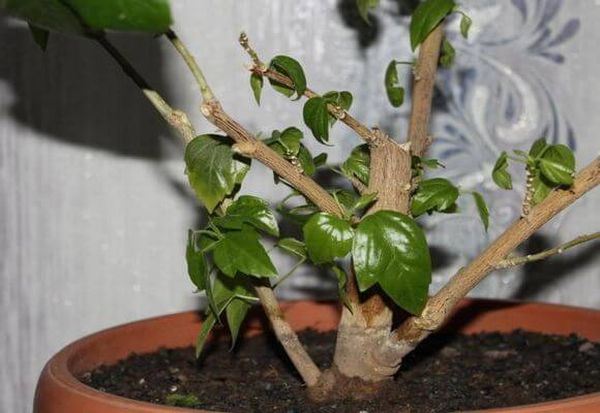

Trim the flower regularly, thus activating the growth of lateral flowering shoots. Before sending a rose for the winter, be sure to prune it. Initially, you need to gradually reduce watering to a minimum: because of this, the plant will lose its foliage faster. Then you should cut off the bare branches, leaving only "stumps" 6-8 cm long.
If you did not have time to prune before wintering, be sure to carry out the procedure in the spring - just before the plant comes out of hibernation. In the summer, it is highly undesirable to cut the bush: in this case, flowering, having barely begun, may soon stop.
Advice
- When the plant begins to lay and form flower buds, you cannot change its location or even turn it.
- Protect the indoor flower from drafts: the plant does not tolerate sudden changes in temperature, it reacts extremely negatively to them.
- Optimum air humidity should also be ensured. In summer, in the heat, be sure to spray the shrub and the air around it, since in dry air the plant often sheds its buds.
We learned why hibiscus does not bloom at home, and what to do about this problem. There may be several reasons for the absence of buds, but they all in one way or another relate to illiterate agricultural technology. Take care of the plant correctly - and there will be no problems with its flowering.
What to do if the plant has stopped blooming and the buds have fallen off?
There are situations when the hibiscus suddenly ceased to please with its flowers, and the buds began to actively fall off. The reasons for this problem:
- Insufficient watering, as a result of which the soil dries up greatly, and the plant, in order to preserve itself, stops blooming and discards its buds.
- Low air temperature, which leads to the fact that the plant begins to prepare for "wintering".
- Pest damage.
When this problem arises, first of all, it is necessary to analyze the conditions in which the flower grows: whether it is sufficiently lit, whether the soil is dry, whether there are pests.
Further it is necessary to eliminate the problem by changing, for example, the irrigation mode, the location of the flower pot, or treat the plant from parasites.
Question answer
How often do home roses bloom?
It depends on the species and variety. There are varieties that can really bloom almost all year round, excluding the dormant period (it can be artificially reduced). But, as a rule, a room rose bought in a store, at best, will bloom from May to November, or several times a year (2-3 times).
Roses bloomed all summer, in September the leaves became very weak, the plant grows poorly, the leaves grow back and fall off, it's already January, and the rose still looks bad. Does not bloom. What's the matter?
It's simple: many novice flower growers, seeing a rose in a pot, for some reason begin to think that its content is similar to many other evergreen indoor crops. But roses are a deciduous plant, they definitely need a period of rest. For wintering, roses are placed in a bright and cool place, watering is reduced (just so that the soil does not dry out to a state of dust) and left alone - it is enough just to inspect the plant, falling leaves - this is normal. In the spring - transplant, cut, a week after transplant, light feeding.
What to do? The rose dries up, the leaves fall off, the buds appear, but not enough, they also fall off, some shoots have dried up ???
Apparently, the plant is overdried. All dried branches should be cut off, leaving a length of 3-4 cm, the plant should be watered, but sparingly, and covered with a plastic bag. Place this improvised greenhouse in a bright, moderately warm place. As soon as new shoots have appeared, you should begin to accustom the rose to fresh air.
I accidentally dried out a rose, the leaves withered, but did not fall off, what should I do?
You can try to soak the plant. If the pot is made of unglazed ceramic, you can dip it whole in water and let the rose stand so until the pot itself and the earthen ball are completely wet. Put the plant in a plastic pot in a deep tray, water it well, wrap it in a plastic bag, leave for 1-2 hours, after which time the leaves will restore their turgor.
I water normally, without overflow, but the rose dries up and the lower leaves fall off, the buds do not appear at all, some shoots dry out, what could be the matter?
The pot is probably too small and the rose lacks nutrition, it is worth replanting the plant. Only by the pass method, so as not to damage the root system, otherwise it will take a long time to wait for flowering.
How to make a room rose bloom?
We offer you to familiarize yourself with: Lavender planting and care in Belarus
In general, if the rose is properly cared for, you do not need to force it - it will bloom. In addition, there are varieties that can bloom almost all year round with very little interruptions. You should choose rooted roses (however, all indoor specimens should be like this, however, this is not always the case), with bright green leaves, free from spots.
What if the rose has stopped blooming?
Autumn is a natural process, the plant goes to rest. If this happened in another period, all the reasons described above should be analyzed.
Can a flowering rose be transplanted in a pot?
It is theoretically possible, but not very clear, why risk the flowering of a plant? In any case, even a gentle transplant, or transshipment, is stressful for the plant, and, most likely, all the buds of such a flower will disappear. If there is a desire to see a rose in a more beautiful container, it is not necessary to transplant, you can simply put it in such a container.
How to achieve abundant flowering of a room rose?
Proper care, feeding, a dormant period is mandatory, and, of course, the correct choice of variety, not all varieties, even with good care, will be completely covered with flowers.
How to water roses to make them bloom?
As for water, it is watered only with settled (at least a day) water, it is better to collect rainwater, in winter it is best to melt or just put snow in a pot. As for fertilizers from root dressings, the following can be recommended:
- urea solution (spring, immediately after pruning, this will give the plant the nitrogen necessary for gaining green mass),
- a solution of ash, mullein, chicken droppings, horse manure, saltpeter, potassium magnesium, extract from banana skins (these are potash fertilizers, they are used in June for abundant planting of buds),
- universal mineral fertilizers, for example, Kemira, or nettle infusion, or organic matter (manure, compost, droppings) - they are applied after flowering, so that the plant recovers its strength.
- organic fertilizer, or fertilizer based on phosphorus and potassium (in the last month of summer, before wintering)
Do not feed during flowering! In each of these four cases, one type of fertilizer is selected. Watering with fertilizers no more than once every two weeks, and, of course, you need to focus on your own conditions and the well-being of the plant.
Watering with a sugar solution (2 teaspoons for 1 glass of water) can give good results. Roses during the growing season are watered with this solution once a week, weakened ones - once every five days.
Improper care
The next possible reason why roses refuse to bloom is incorrect, in scientific terms, agrophone. Rose is an intensive care plant. It requires additional nutrition, timely spraying against numerous pests, and disease control. A weakened, undernourished, oppressed bush with leaves fallen from ailments is unlikely to gain strength to please you with flowering.
Rose - intensive care plant
However, one cannot overdo it here: often gardeners, trying to achieve the maximum result in cultivating roses in their garden, get too carried away fertilizing... This is facilitated by some printed publications, in which it is advised to give roses to roses almost every week with either root or foliar dressing. As a result, the roses are overfed, the strength goes to the foliage, and the flowering is poor. It is noticed that such plants overwinter much worse, since their shoots do not have time to really woody.
therefore feeding should be balanced by composition of elements and justified. Watch your pets - if suddenly some signs of starvation appear, spots on the leaves, thin shoots, weak flowering - and only in this case, come to the rescue.
You can choose a suitable top dressing in our market. Take a look at the selection of Fertilizers for roses - there you will find both granular fertilizers of a long-term effect and liquid fertilizers.
The tropical plant hibiscus is known in indoor floriculture under the common name Chinese rose. Although hibiscus has nothing to do with real roses or wild rose hips. This plant is a completely different kind of plant.
In indoor floriculture, hibiscus is in demand for its beautiful flowers, which also serve as a useful brew for refreshing and invigorating tea. Many amateurs are waiting for flowers. pamper their plants, creating the best, in their opinion, conditions. And if the plant still does not give flowers, they ask why the Chinese rose does not bloom or blooms very rarely, giving one or two flowers? Let's try to understand the intricacies of growing hibiscus.
Incorrect cropping
The next possible reason for the lack of flowering is wrong cropping... In the spring, some groups of roses (shrubs, English roses, klaimings) should never be heavily pruned. For them, only a sanitary and light shaping haircut is used, when the tops are shortened to a strong kidney. This is done to encourage branching.
It is not worth trying to form a small bush rose from a tall shrub. By cutting its stems in half (as is sometimes advised), you will significantly postpone the flowering time, since the plant will recover for a long time after this procedure, growing new shoots. But, interestingly, the nature of her growth will remain the same, that is, all the sacrifices will be in vain.
In the summer, in order to force the rose to release new flowering shoots, it is necessary in a timely manner remove wilted flowers... If you live in a country house, it is advisable to do this every day, going out into the garden with a pruner. By neglecting this rule, you will not wait for re-flowering.
Faded buds are cut off immediately. Photo by the author
In addition, all the so-called "blind" shoots that have not released buds should be shortened (certainly by a strong bud) by about half, thereby prompting the rose to branch. This technique allows you to achieve flowering. But this is all provided that the plant is healthy and receives enough sunlight and nutrition.
Another nuance: if for some reason in the spring you (did not know, did not notice or were simply too lazy) did not remove thin and unproductive shoots growing inside the bush or close to the ground that will never bloom, remove them in the summer. An important rule of English flower growers applies here: there should not be shoots thinner than an ordinary pencil on a rose bush. The rose, freed from them, will concentrate on the flowering of the main ones.
Shine
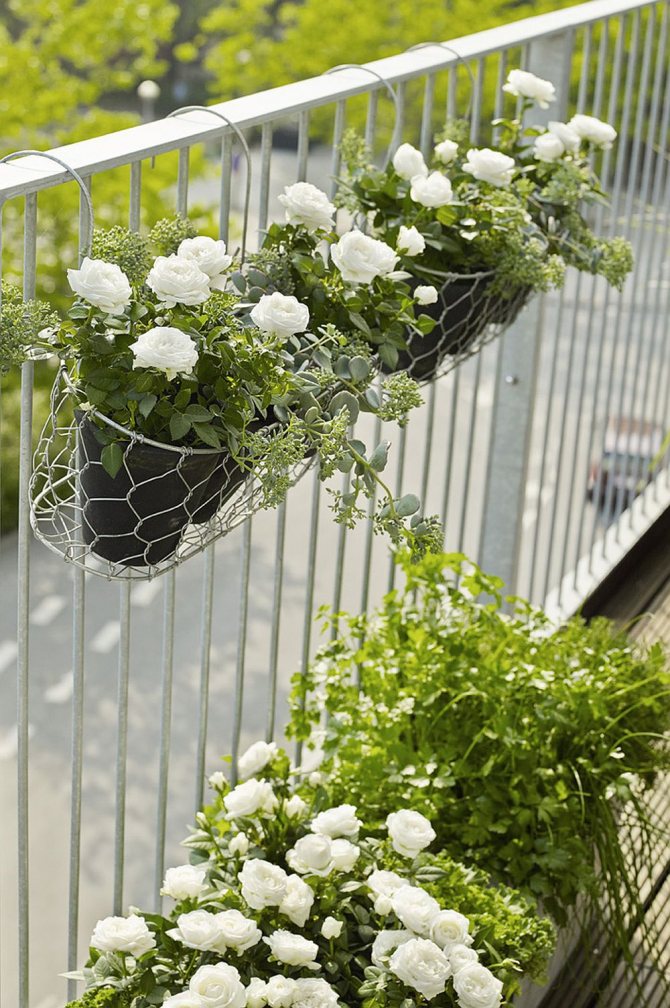

Roses are light-loving plants... The best window for a room rose is the southwest or southeast. An east window is also acceptable, but you should make sure that the variety is not the most capricious. South windows are permissible only if it is not too hot on them - in the heat of roses flowers and leaves become smaller, and the flowering is not so long. Analyze your own conditions. South window to the south window - strife. Maybe there is a tree in front of your window, and the window itself is on the ground floor, so even on the southern window of a home rose, there may be an elementary lack of light.
If the rose does not have enough light, or the apartment has only northern windows, you can organize supplementary lighting with artificial light... Roses feel great in this kind of lighting, if, of course, it is chosen correctly, moreover, the modern choice allows you to equip this without compromising the design of the room.
The length of daylight hours required for a rose to bloom should be 10-12 hours.
Perhaps the rose has enough light, but bright the sun's rays heat up the pot too much (especially dark plastic pots) and the soil dries up, warming the roots. Rose roots still love relative coolness. Therefore, it is better to immediately plant the rose in pots of light shades, or organize shading near the pot.
Wrong landing site
Of decisive importance in the cultivation of roses in the cold Russian climate is landing site... You should know that roses, these natives of the southern regions, are very sensitive to the lack of sunlight. For full development and flowering, they need at least 8 hours of full sun. The degree of illumination determines the strength of growth, the number of flowers, and the health of the rose bush. Therefore, it should be planted in the most open area. This is an indispensable condition! If you planted a rose in the shade of trees, fences or buildings, you can not wait for flowering, it will not happen.
Roses love the sun. Photo by the author
Roses, due to their southern origin, are very thermophilic plants, so the planting site should be protected from drafts, especially from constantly blowing winds. When planting, gentle beauties should be provided with all the necessary environmental conditions - sunlight, fertile and permeable soils, lack of competition, which is why the rose has long been planted exclusively in rose gardens or in monoclumba. With this method of placement, by the way, they are much easier to care for. Do not place roses next to shrubs, such as lilac, mock orange or spirea, which will be powerful competitors in the fight for water and nutrients, the rose in this case will be depressed and also will not bloom.
Monoplanting of roses. Photo by the author
Reasons for the absence of flowers
Any imbalance can be the reason for the cessation of hibiscus flowering:
- direct sunlight or lack of light;
- waterlogging of the soil or too little watering;
- nutrient-poor soil or excess fertilizer;
- cramped pot or too roomy tub;
- a sharp decrease in temperature or a sweltering summer heat.
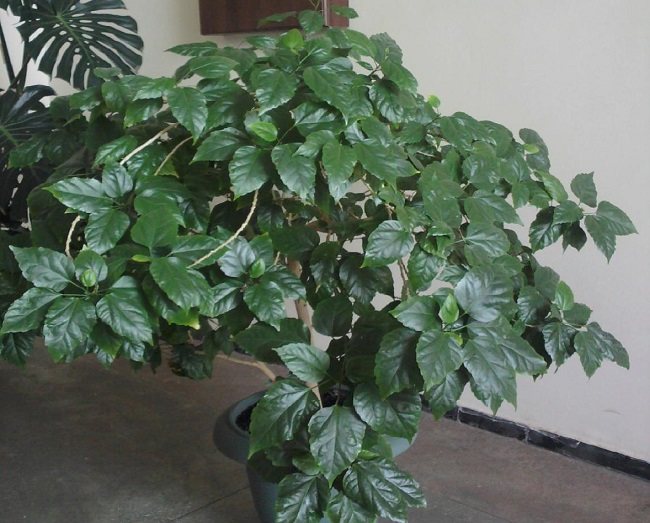

First of all, it is necessary to determine the optimal conditions for hibiscus flowering, to ensure them as much as possible. If you want to wait for terry roses as soon as possible, and you are very upset that hibiscus does not bloom, analyze your mistakes in care and hurry to correct them.
Indoor plant
Improper care is the main reason for the lack of flowering. It is important to understand that the care of indoor and garden ornamental crops may differ.
Hibiscus loves light. If a pot with a flower is in a darkened area of the house, then you are unlikely to wait for your home beauty to bloom. However, do not rush to rearrange the flowerpot in direct sunlight. Do not forget that ultraviolet rays can provoke a burn. The optimal place for placing a flowerpot with hibiscus, as noted by experienced growers, is the southern and southeastern sides, where bright diffused light prevails.
When kept at home, the flowering of the Chinese rose usually lasts for 2-3 months, starting in the middle of summer and ending in the fall, in September.
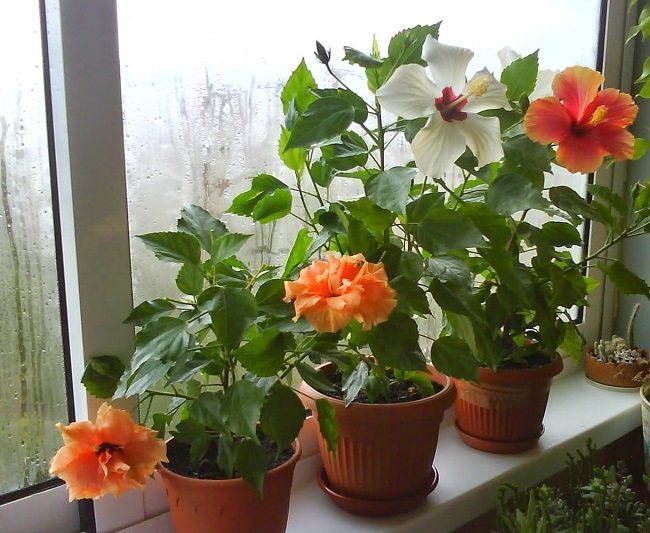

Have you decided to transplant a flower when it has grown large, causing the plant to stop blooming? Too large a pot is one of the common reasons for hibiscus not flowering. Until the roots fill all the free space in the flowerpot, the plant will vigorously grow and refuse to bloom. Please be patient and wait for your handsome man to decorate his home rose garden with beautiful flowers.
By the garden flower
The lack of flowering can be observed not only in indoor, but also in garden hibiscus. As in the previous version, when we discussed indoor floriculture, improper care may be the reason for the lack of flowering of a plant grown outdoors in the garden. Most often, novice growers try to water the flower abundantly. However, according to the recommendations of gardeners with many years of experience, hibiscus does not like too wet soil during the growing season.
Another reason for the lack of amazingly beautiful buds is the excess nitrogen in the soil. Do not get too carried away with fertilizers; it is necessary to feed the plants in moderation and in a timely manner.
Also, do not forget that the lack of pinching and pruning of an ornamental bush can cause a blooming hibiscus to refuse to throw out new buds and eventually stop blooming altogether.
When does flowering occur in an apartment?
Important! If properly cared for, the rose can bloom all year round.
This requires:
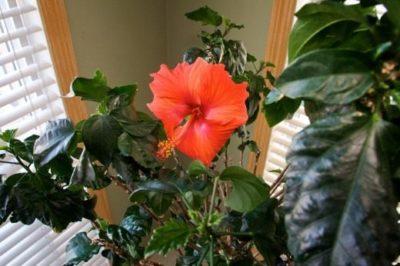

heat;- enough space and light;
- proper watering and pruning.
However, it is not always possible to adhere to all of the listed conditions. As a rule, in the room, the flowering of the plant lasts 2-3 months a year, from July to September.
Almost all varieties of Chinese rose have odorless flowers., but sometimes there are specimens with a pleasant fragrant aroma.
Conditions of detention
Chinese hibiscus is quite unpretentious and shade-tolerant, but it is preferable to keep it in bright enough roomavoiding direct sunlight. This is one of the conditions for good flowering. In summer, it is useful to expose the plant to fresh air in a bright place protected from the wind. The optimum temperature of the content is in the range of 18-22 ° C.
The flowering period of Chinese hibiscus usually occurs in spring, summer and autumn: its crown is periodically decorated with magnificent single double flowers. Watering at this time should be regular and abundant after the topsoil has dried. After watering, the soil must be loosened to provide air access to the roots. Strong overdrying of the soil during this period is unacceptable., otherwise the plant will drop foliage and buds. In winter, watering is reduced.
Hibiscus is very responsive to fertilization, in the spring-summer period, an adult plant is fed about 3 times a month with mineral fertilizers or a weak organic solution. In winter, they are fed with a weak solution of fertilizers once a month.
Top dressing of a tea rose
When growing a tea rose at home, it is necessary to provide it with good care, feeding in particular. It should be done systematically. If a plant has problems, it withers, withers, leaves an unhealthy color, sheds foliage - perhaps the components for nutrition are incorrectly selected or the dosage is incorrectly calculated. However, if you follow the instructions for use, there will be no difficulties. It is enough to carry out top dressing once a week after abundant watering.
In the spring, when the plant begins to revive, it needs more heat, light and water. The pot is placed on a well-lit, warm window, when the soil dries up, it is thoroughly watered. It is necessary to wash the leaves, spray the entire bush. The tea rose should be actively cared for before the onset of winter.... With the arrival of warm days, the rose is taken out to soak up the sun, but you cannot immediately put the flower in direct sunlight, you need it to go through a period of adaptation in the shade for 15-20 days.
In summer, the rose must often be turned towards the sun so that it blooms magnificently and the bush does not turn out to be one-sided.
Lack of nutrition
One of the frequent complaints "the rose turns yellow and leaves fall - what's the matter?" may be due to a lack of nutrients:
- Pale leaf tint along the central vein, young leaves are too light, leaves fall off, shortened shoots, weak growth, weak flowering or even its termination - lack of nitrogen. It is worth carrying out foliar feeding.
- Gradual yellowing between veins (veins and a small area along them remain green) - this is chlorosis, iron deficiency.
- Spots and yellowing of the leaf plate between the veins, the veins themselves are bright green - a lack of potassium.
- Rarely meet yellowish spots with a burgundy tint and beads - this is a lack of phosphorus.
Fertilizers should be treated with particular care shortly before flowering, during the setting of buds and - a moment that many people forget - after flowering. It is likely that the reason for the lack of flowers in the rose is that it exhausted its strength last time and now simply cannot recover.
Why else can leaves turn yellow and fall off?
In addition to lack of nutrients, there are three other main reasons: diseases, overfilling, underfilling... We analyze the first below.
Underfilling - the problem is obvious: drying out soil and drying, yellow lower leaves that fall off, while the petiole is dry, and the tips of such leaves began to shrink. Very often this problem is confused with another - with soil closure... When the roots are soaked and over-watered (perhaps the plant is planted in too dense soil), the roots begin to die, the leaves do not have enough nutrition, they turn yellow, but a little differently than during drought. They kind of lose tone, become soft (and not fragile), fall off without losing elasticity, that is, the petiole of a fallen leaf will be soft to the touch.
The flooded plant needs urgent resuscitation (removal of rotten roots, processing, planting in fresh soil, careful observation and care), otherwise it will completely die in the near future.
✔ 6. The air is too dry.
It can also be the reason for the lack of flowering. It should be noted that if the temperature in the apartment is higher than 23 ° C, then periodic spraying only temporarily refreshes the plant, but this is not enough. Once a week, the leaves of a room rose should be washed or sprayed with water from a spray bottle. It is better to do this in the evening, after sunset.You can put vessels with water between the pots: it will slowly evaporate and humidify the air. You can use a humidifier.
Chinese hibiscus or Chinese rose in nature
The very name of this plant suggests that China is its homeland. From the southern regions of this country, hibiscus, with the help of humans, appeared in almost all geographical areas with a tropical or subtropical climate.
In countries with a cold climate, where the Chinese rose is grown indoors and in greenhouses, growers should remember the tropical origin of the plant and even in winter, keep the temperature at least + 15 degrees, and in summer not lower than +22 +25 degrees.


The Chinese rose belongs to the genus Hibiscus, Malvaceae family. In the wild, it is a shrub, quite tall, it reaches a height of about three meters. The plant is most often evergreen. The leaf plate is slightly corrugated, dark green, shiny, jagged edges. The leaves are 10 - 15 cm long. They have petioles.
The flowers are large, when the buds open, the diameter of many flowers exceeds 15 cm.
There are white, cream, scarlet, pink, lilac flowers. There are forms with simple and double flowers. The stamens of the Chinese rose are folded into a long narrow tube and protrude from the flower forward. The petals are thin, no thicker than a sheet of paper.
Flowers live one day, but, as a rule, new ones open every day, therefore, flowering is continuous for several weeks. In order for such a flowering to be also when grown indoors, the Chinese rose must be created the appropriate conditions.
Excess food
Oddly enough, this is a more common problem than a disadvantage. Novice growers often begin to care for the plant too diligently, and as a result salt the soil... You should also monitor the dosage of fertilizers - do not exceed the concentration indicated in the instructions, and even better reduce it. Fertilizer should be watered correctly - the soil must first be slightly moistened.
Signs of overfeeding? Lush greenery - with excess nitrogen, the plant fattens, begins to go into the "tops". You can also determine overfeeding if the rose is susceptible to disease, grows poorly, while the rest of the care is in order.
✔ 5. Disturbance of plant nutrition.
Disturbance of plant nutrition is not only when the plant is starving, if it has not been transplanted or fed for several years, but also when the plant was fed too much with fertilizers, especially if they are not correctly selected and contain a lot of nitrogen (in such cases they say that the plant “fattens” ).
The main rule of using fertilizers: it is better to “underfeed” than “overfeed” the plant. You should also follow the recommended dosage of fertilizers: it is better to dilute the fertilizer more than burn the roots with an overly concentrated fertilizer mixture. Start fertilizing your plants in April, every two weeks with a special fertilizer for roses or for flowering houseplants.
Shrub of the malvaceous family
The homeland of hibiscus is northern Indochina. Over time, the shrub began to spread in regions with tropical and subtropical climates, it began to be grown in parks and gardens. For 8 months, it continuously pleases the eye with a scattering of white, orange, yellow, crimson and scarlet inflorescences.
The Chinese rose is grown in harsh and temperate climates, in greenhouses and apartments. Experienced and novice flower growers love the rose for its combination of unpretentiousness with an extraordinary decorative effect. The stark color contrast between glossy dark green foliage and vibrant colors is a delight.
The shrub has a lush crown, which, with proper care, can reach a height of three meters. The flowers are funnel-shaped, large, up to 15 cm. Terry, semi-double flowers bloom for a long time, and stay open for only a few days.
The plant is light and moisture-loving. If the ground dries up, the Chinese rose sheds its leaves. For the plant to feel good, it must be regularly sprayed and placed on a tray of water. Roses tolerate light partial shade well, but in this case they will bloom less. Indoor Chinese rose blooms from early summer to autumn.
Large, funnel-shaped flowers are held on a long peduncle. The inflorescence is formed of five petals, collected in a tube around the golden stamen. Flowers bloom at dawn, and by sunset the petals begin to fall. Many varieties are odorless, only a few white inflorescences spread a subtle and delicate aroma. A medium-sized shrub can produce up to 20 inflorescences, and a large plant up to 50 inflorescences.
Photo
See more photos of hibiscus below:
Diseases of indoor roses
Like any other indoor flowers, tea roses are susceptible to various diseases. Most often found powdery mildew and black spot.
If a whitish bloom, similar to a cobweb appears on the stems and leaves of a plant, this is powdery mildew, microscopic mushrooms attack your pet. It develops if the roots lack oxygen, the room is too dry or, conversely, very humid, with sharp temperature fluctuations, with an excess of fertilizers. If you do not take action in time, the rose will stop growing and develop, it will begin to die. The damaged parts of the plant must be cut off and treated with "Fundazol".
When the leaves turn white underneath and yellow on the top plate, you are dealing with downy mildew. The causes are the same as for powdery mildew, see their description above. Use fungicides for treatment.
If you notice black blotches on the shoots and leaves, this is spotting. It appears when the temperature is not suitable for the flower or when the indoor air is dry, excessive watering. To help the plant, spray it with copper sulfate.
Orange-white pustules appeared on the leaves - this disease is called rust. It develops in dry air and high temperatures. All part of the plant affected by the disease is removed, more comfortable growing conditions are provided.
Carefully take care of your pet, this will save it from diseases.
domsad.
Fertilized soil
If you are wondering why the rose does not bloom, pay attention to the quality of the soil. The royal plant does not like heavy and dense soils. To see the beauty of its buds, the plant may need to be transplanted. You can try fertilizing the ground. You should be careful here, because an excess of nutrients will lead to active growth of greenery, not buds. In order for the flower to develop correctly, the following must be added to the soil:
- organic or mineral fertilizers;
- top dressing that contains phosphorus and potassium;
- wood ash is great.
All dressings should be applied in small portions and in low concentration.
Tea roses. Planting and leaving
At home, the queen of flowers needs special care. plant a plant only exclusively in the soil for roses, do not allow sudden changes in temperature, they are taken out into the air only after preliminary hardening, by airing the room for several hours starting from the earliest spring. Do not put the pot on a hot windowsill. - the plant will lose color and leaves. In summer, place your pet on a loggia or balcony, where the temperature is not higher than 25 ° C, where it will be comfortable.
Watering should be done: in the summer - twice a day, in the winter - as the soil in the pot dries up. Use separated or purified water, since various impurities and additives contained in ordinary tap water can lead to disastrous results. It is recommended to spray the foliage with cool water, especially in summer. Only the leaves should be sprayed, not getting on the flowers and buds - they need dryness.
The tea rose, like any other indoor flowers, needs feeding. The soil should be constantly enrich with organic and mineral fertilizers, carry out foliar feeding. You can use mullein and bird droppings, various complex fertilizers for this purpose. But the main thing here is not to overdo it - excessive feeding can lead to the death of the plant.
Tea rose care is different for each season.
With the arrival of autumn, as soon as the temperature drops below 15 ° C, the rose is brought from the loggia or balcony into the house, placing a window on the windowsill facing the south. It is no longer necessary to feed the plant, watering should be reduced to once every few days, since during this period growth stops, the formation of new buds stops and preparation for winter begins. The temperature should be maintained at 15-17 ° C, the air should not be dry. There is no need to put a flower near heating devices, household appliances. She will be comfortable on a cool windowsill, where the room heat does not reach.
Winter is a dormant period, the rose does not grow and does not bloom, the leaves fall. The plant needs humid air, it should be watered once every few days, periodically sprayed.
When the first spring warmth comes, the plant comes to life. With the appearance of young shoots and leaves, watering is increased and begins to actively feed, saturating the soil with useful substances so that the plant develops strong and healthy. Mullein works well for this purpose. To prepare such a dressing for a room beauty, you will need:
- mullein - 1-3 parts;
- water - 2-3 parts.
The resulting composition must be thoroughly mixed and left to ferment for five to ten days. Before watering, it is diluted with water in a ratio of 1x15.
You can also use bird droppings:
- litter - 1 part;
- hot water - 20 parts.
It is infused for two days, before use, it is diluted with water 1x15.
In summer, the tea rose is very much waiting for attention and care, which consists in abundant watering, frequent feeding and regular spraying. It is necessary to cut off lifeless shoots, wilted leaves and buds to make room for new growth. The prevention of various diseases is very important; the plant should be regularly examined for problems. The rose should not overheat. If the plant has become cramped in the pot, it must be transplanted into a new, larger one. It is recommended to carry out this procedure in accordance with the lunar calendar for the transplantation of indoor plants.
Rejuvenation
Still wondering why the rose does not bloom in the garden, then remember if you are pruning the bush. This procedure is aimed at rejuvenating the plant, due to which a large number of buds appear. Pruning is carried out only in the spring. Subject to removal:
- old and diseased branches;
- shoots that have suffered from severe frosts and various insects;
- branches that are more than three years old;
- shoots directed into the bush.
It is worth explaining the last point in more detail. Such branches must be deleted without fail. Inside the overgrown bush, it is possible for insects to accumulate and the reproduction of fungal diseases, which will lead to the death of the flower. You can easily recognize old branches for removal by the lignified bark of a dark color. The rest of the shoots are simply shortened according to the following scheme:
- short pruning up to 4 buds;
- average removal of up to 7 kidneys;
- weak circumcision of up to 10 kidneys.
Choose the type of pruning according to the variety of your rose. We looked at many answers to questions about why a rose does not bloom, but we missed another main point.

